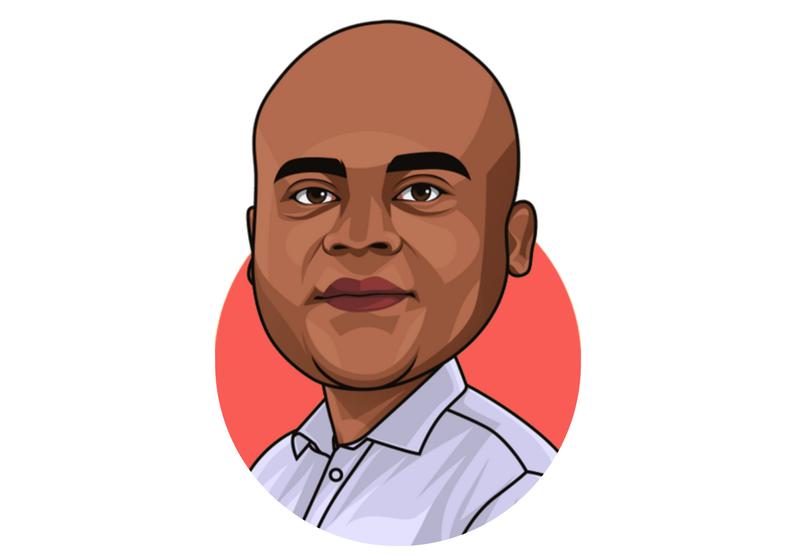Perhaps they had a way of doing this and the stone could be one of them. For instance, the bracteates from the Germanic Iron Age can be interpreted as depictions of rituals connected to the belief of Odin, such as seid and magic.[73]. They are literally tying the knot. From this she deduces that the readers were not expected to have direct knowledge of pagan rituals. Norse burials were tableausmore like twisted fictional crime scenes from shows like True Detective and Dexter , where the killer is trying to send a message, and a lot less like something youd find near a church. (2012, December 11). Thats a great rhetorical question: death could come quickly in the Dark Ages, especially if you were part of a tribal culture with a strong emphasis on violence. Copyright - 2007 - 2021 - Legends and Chronicles, Viking Funerals Buriels and the Afterlife, Medieval Chronicles - Medieval history, information and facts. Written by Ellen Lloyd AncientPages.com, Copyright AncientPages.comAll rights reserved. This is because of the burial position that they found their bodies. It is known that different types of divine forces were tied to different places and that there were different rituals connected to them. Thus it is also hard to determine whether a ritual was private or public. It involved placing the deceased on the ship, sailing it out to sea, and setting the Viking ship on fire. [40] Around 900 the great hall burned down, but new graves were placed on the site. Just bend im in half. Digging big holes during winter sucks. This information provides us with important context clues in regard to what the hell these people were doing with their wild burials. Rancho Cucamonga, CA Obituaries at funeral.com Inland Memorial Obituaries in nearby Upland, CA Lada's Cucamonga Mortuary Obituaries in Rancho Cucamongo, CA Rancho Cucamonga Obituaries in the San Bernardino Sun Obituaries, past 30 days, past year, all records in Rancho Cucamonga, CA Snyder's Care Center Obituaries The most recent findings are from 1020 to 1030, when the great hall seems to have been dismantled.[22]. However, it is an important point that medieval sources have to be understood according to the environment they were written in. For instance, in the first part of the tale of the Norwegian kings he tells about the rituals Odin instituted when he came to the Scandinavian peoples. The religious festivals have to be seen in the light of these other activities. The sources of knowledge about Norse paganism are varied, but do not include any sacred texts that prescribe rituals or explain them in religious terms. However, in principle, material remains can only be used as circumstantial evidence to understanding Norse society and can only contribute concrete knowledge about the time's culture if combined with written sources. Another option was that the Viking was burned, and cremation was relatively common during the early Viking Age. Some grave mounds were. Even the dead needed something to do, lest they rise from their graves or, even worse, fly up your ass and haunt your guts. When it comes to the burial, the Vikings would bury the ashes of their dead in graves or even under piles of rocks. But now youre paying the price: hes back, but this time hes a draugra vengeful revenant whos pissed about the poor send-offand hes getting back at you by, lets say, withering your harvest and giving you diarrhea. Every Norse funeral was performed in accordance with pagan rituals that were rooted deep within Viking culture. Pagan Burial Customs and Soul Releases Preparation for the burial of the decedent includes: Anointing the decedent's feet with oil to aid in the journey ahead. They are commonly described as anthropomorphic wooden staves, sometimes with faces carved at the top. This is written in old texts and is also told in the myths. Before they adopted Christianity, Vikings were Pagans and had many customs, practices, and beliefs. Several intriguing archaeological discoveries shed more light on ancient Viking burial customs. Also, the written sources tell that a commander could consecrate the enemy warriors to Odin using his spear. To die in bed of sloth, or to die of old age was not considered brave in old Norse times. Prayer to the Gods of Death: At Samhain, the earth is growing cold and dark. Ellen Lloyd - AncientPages.com - Ancient Viking funeral traditions and rituals were very complex. The connection between the living and the dead was maintained through rituals connected to the burial place like sacrifice of objects, food and drink. If they were treated in the ritually correct way, they could give their blessings to the living and secure their happiness and prosperity. Its one less thing for the bereaved to think about while theyre dealing with the ultimate in real-life sh*t. Not so for the Norse, Vikings, or Viking-Age Scandinavianswhatever you prefer calling the Germanic people that dwelled in Norway, Sweden, Denmark, and parts of the British Isles between 793 and 1066 CE. Thus, religious as well as secular power in Norse society was centered on individuals. The Scandinavians did not leave any written sources on their religious practice, and Christian texts on the subject are marked by misunderstandings and negative bias, since the Christians viewed the Nordic beliefs as superstition and devil worship. There are tough mentions of a burning ship burial out to sea in the sagas. Nonetheless, the thawing of winter and the coming of spring was an important, and festive, time for many in Viking societies. Several tales from the sagas contain remains of pre-Christian rituals. Or you can judge them all the way through if you likeI dont think theyll mind either way. The ashes were to be spread either at sea or on the ground. Anyway, the next time someone tells you they want a Viking funeral, let them know that no, they just think they do. It was secured through ties of friendship and loyalty and meant that there never were any totally consolidated structures of power. It also handily deterred grave robbers, who might otherwise have looted the expensive, buried weapons. Each god had his own priests and people sacrificed to the gods whose help they needed: Thor was called upon in times of famine and disease, Odin was called upon to gain victory and Fricco was called upon for fertile marriages. [58], As a prelude to marriage the family of the groom sent the groom and several delegates to the family of the bride to propose. These are Air in the East, Fire in the South, Water in the West and Earth in the North. The Norsemen, meaning men of the north, had their own Norse pagan religion with . In a saga called rar saga hreu we can read about rr who dies from being wounded in the left arm. But theres only one thing that all Norse burials had in common: they were all characteristically uniquelike snowflakes, but with way more dead things. There has been great disagreement about why, for instance, two bodies were found in the Oseberg tomb or how to interpret Ibn Fadlan's description of the killing of a female thrall at a funeral among the Scandinavian Rus on the Volga. Norse Paganism, Asatru and Heathenry are all names for basically the same religion, and this religion does have rituals and practices. Her head was removed from her body, and her lower jaw was removed from her head. In Viking times if you died, they would typically send you on your way in one of two ways, cremation or inhumation. Browse all the additions to Legends and Chronicles. [68] The basis point for the interpretation of placenames is that they were not just practical measures people used to make their way but also constituted a symbolic mapping of the landscape. Though they were written in a later Christian era, the Icelandic sagas are of great significance as sources to everyday religion. . However in practise its believed that this was not always the case, with many believing the body to be cremated before the ship was sailed. Some of the norse pagan and viking traditions are often misunderstood or wrongly portrayed. ); Hansen, Lars Ivar (1999); "Politiske og religisa sentre i Nord-Norge", in Schjdt, Jens Peter (red. After Christianisation, the possession of such figures was banned and severely punished. It was the first public gathering of the two families and consisted of a feast that lasted for several days. [36] There is general agreement that Gamla Uppsala was one of the last strongholds of heathen religion in central Sweden and that the religious centre there was still of great importance when Adam of Bremen wrote his account. In many cases the line between public and private religion is hard to draw, for instance in the cases of the yearly blt feasts and crisis and life passage rituals. On this Wikipedia the language links are at the top of the page across from the article title. Subscribe to our mailing list for insider news, product launches, and more. He was fully dressed and surrounded by ancient artifacts such as a bronze kettle, runic inscriptions, a game board, and a sleigh. The evidence of prehistoric openings in mounds may thus not indicate looting but the local community's efforts to retrieve holy objects from the grave, or to insert offerings. In the Viking age the main meaning of the word had become to sacrifice. The Oseberg Ship is one example. This account has a suggestion of the mythological connection but it is impossible to decipher it. Before the age of Christianity, when Vikings still worshipped pagan gods, it was common to bury a Viking with his belongings, often lying in a . Thus a holy space was created with rules of its own, like a ban on spilling blood on holy soil. Oh, and many of these bodies were mutilated. Thus war was ritualised and made sacral and the slain enemies became sacrifices. And, given all the sacrificing and binge-drinking deaths that likely occurred in the lead-up, Im not so sure these folks were too worried about physical safety. The other realms are home to multiple gods and goddesses, as well as other beings like giants, dwarves and elves. Therefore the Viking uses pyre to ensure their dead were successfully cremated. Credit: Shetland.org. Its often reported that Valhalla was a place for only warriors to go to, if you fell in battle as a brave warrior then entry to Valhalla would be granted to you. However accounts in the sagas about the complicated individual emotions connected to a marriage tell us that things did not always work out between the spouses. Before we offer you a better insight into the complete history of a Viking burial, let's see where, according to the Norse beliefs, the dead Norsemen went after their death. The norse pagans believed in reincarnation. ); Hyenstrand, ka (1999); "Teofora ortnanm och frkristna organisation", in Schjdt, Jens Peter (ed. [74] For instance, the written sources point to the existence of religious specialists within the public faith. The architectures and funeral rituals. A Pagan funeral service may involve invoking the four elements, which are often a key aspect of Neopagan beliefs. ); Holmberg, Bente (1991); "Om sakrale sted- og personnavne", in Steinsland et al. People thought certain traits were connected to certain names and that these traits were carried on when the names were re-used by new generations. Om offer i fornskandinavisk religion", in Schjdt, Jens Peter (ed. They were protective deities for areas of land and there were many religious rules for how to deal with them to avoid conflicts. Grambo, Ronald (1991); "Problemer knyttet til studiet af seid", in Steinsland et al. It celebrates the influence of the Scandinavian Vikings in the Shetland Islands. The sacrificial rituals of the Vikings. O'Connor Mortuary 25301 Alicia Pkwy Laguna Hills, CA 92653 | FD 1293. Free shipping world wide | Safe payment: All major credit cards, Paypal, Apple pay and Gpay. In his Germania, Tacitus refers to a sacred chariot in the faith of Nerthus. If I may compare Norse burials to modern shop local trends, the Norse people were into artisanal, bespoke graves that fit the individual being buried. Masked dancers, music, and singing may have been common parts of these feasts. The name of a location can reveal information about its history. Except, instead of a little dog, it was a whole person in a boxcarry-on carrion, if you will (sorry). In the Poetic edda we can read about rebirth in The Niflung Cycle, the poems Helgakvia Hundingsbana II and Helgakvia Hjrvarssonar among others. We have little written evidence for their burial rituals, but Arab writer Ahmad Ibn Fadlan is one of the few people to have witnessed a 10th-century Viking burial. Contact with them was seen as crucial to the well-being of the family. [43], Norse religion did not have any class of priest who worked as full-time religious leaders. Without the intense heat caused by a pyre, a normal fire would likely not burn the body completely. The purpose of these sacrifices was to ensure fertility and growth. ); Lagerlf, Agneta (1991); "Gravskicksfrndringar = religisa frndringar = samhllsfrndringar?" . Fact No. This burial was not very common but rather reserved for sea captains, noble Vikings, and the very wealthy. Dismembered. In his hand he held a sceptre. It was traditionally one of the king's duties to lead a blt feast each fall. [4], It is not certain to what extent the known myths correspond to the religious beliefs of Scandinavians in pre-Christian times, nor how people acted towards them in everyday life. Dead bodies dont appear to have been treated as inactive or inert objects. The first blt (the rituals of satr are called blt) was held on Jnsmessa, Midsummer Night. Knowledge about pre-Christian rituals in Scandinavia are composed mainly from fragments and indirect knowledge. By cremating their dead the Vikings believed the smoke would carry them to their rightful destination in the afterlife. . Retrieved from https://blog.britishmuseum.org/the-viking-way-of-death/, Rowe, Richard. This was the first legally binding step between the families, and the occasion was used to negotiate the inheritance and property relations of the couple as well as the dowry (heimanfylgja) and wedding present (mundr) from the groom's family. Its head rests in a basket on one dead womans lap. Odin was the god of war and courage, his name meant "the furious" and he was depicted as a warrior. Freyja is said to have taught it to Odin. This may be because larger statues were deliberately destroyed. 1 About Norse Burials: Collateral Damage While all Norse burials are unique, one common theme seems to be that you don't send a dead Norseman or woman off to Valhalla without killing something else to keep them company. was found in Denmark. In historic times the gothi was a male politician and judge, i.e. [6], Ceremonial communal meals in connection with the blt sacrifice are mentioned in several sources and are thus some of the most described rituals. Rare Roman Mosaic Depicting The Adventures Of Greek Hero Achilles Discovered In Rutland, UK, Yazlkaya: One Of The Most Striking Religious Shrines Of The Hittite Empire, Mysterious 1,800-Year-Old Roman Marble Inscription Found In The Ancient City Of Aigai Deciphered, Rare Sphinx Seal Belonging To Roman Emperor Discovered In India Confirms Existence Of Legendary Muziris, Archaeologists Uncover Secrets Of Vall Borgring Viking Age Circular Fortress, Ancient Nandivardhan Was The City Of Vakataka Rulers Who Built Ajanta Caves. Cremation was no longer practiced as often, and inhumation was more widely adopted. [citation needed] In the Viking Age, people would pray to the goddesses Frigg and Freyja, and sing ritual galdr-songs to protect the mother and the child. Invoking Gods, guides, and ancestors to ensure safe travel.
Restaurants Coming To Nexton Summerville, Sc,
Hcl + Naoh = Nacl + H2o Net Ionic Equation,
Articles N



norse pagan funeral traditions Leave a Comment